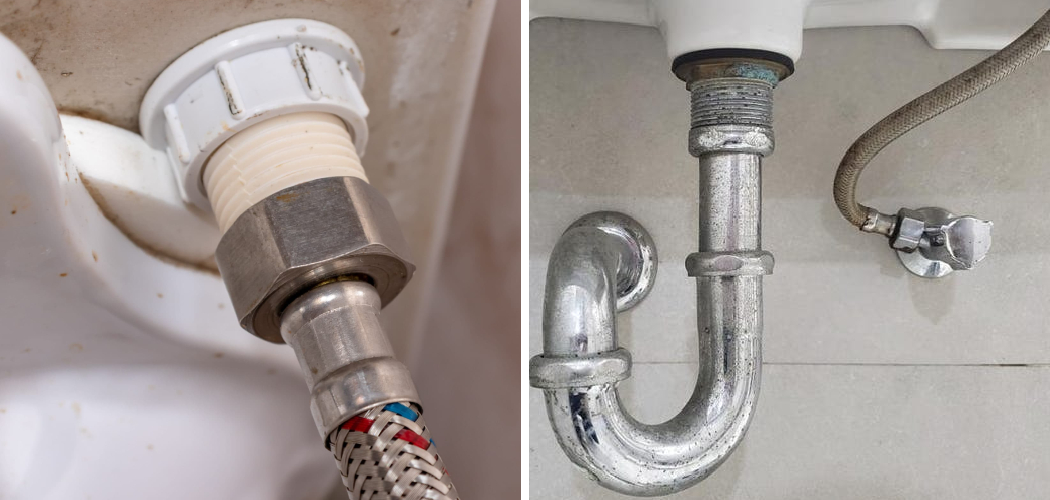The water supply line is important to the toilet and its operation. If it’s leaking, not functioning properly, or has become too old and corroded, you need to replace it right away in order to avoid costly plumbing repairs. Additionally, replacing a toilet water supply line yourself is an easy do-it-yourself project that can be done in a few simple steps.
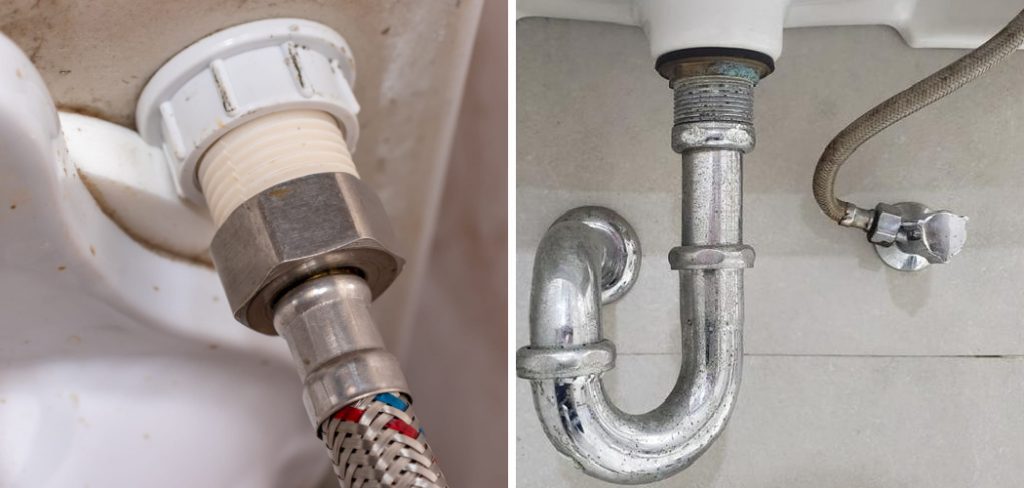
By doing it yourself, you’ll be able to save money and time on hiring a plumber for the job. Replacing a toilet water supply line can have many advantages. The most important advantage is that it can help prevent costly repairs in the future by keeping your system running more efficiently.
Additionally, replacing an old and worn-out water supply line can improve your toilet’s overall performance by providing better pressure, improved water flow, and reduced the potential for leaks. In this blog post, You will learn how to replace a toilet water supply line in detail.
Step-by-Step Processes for How to Replace a Toilet Water Supply Line
Step 1: Inspect the Area
Before beginning the replacement process, inspecting the area around the toilet water supply line for any signs of damage or potential hazards is important. In order to ensure that no water leaks out during the replacement process, it is necessary to shut off the water supply to the toilet by turning off the shutoff valve near the toilet.
Step 2: Disconnect the Existing Line
With the water supply turned off, you can begin to disconnect the existing line from both the shutoff valve and the bottom of the tank. Using a pair of pliers, be sure to remove any debris or blockage from the existing water supply line that could be causing a leak.
Step 3: Install the New Line
Carefully attach one end of the new water supply line to the shutoff valve, then thread and secure it on the bottom of the tank. Make sure that all connections are hand-tightened. After all, connections are secure, turn on the water supply to ensure that there are no leaks.
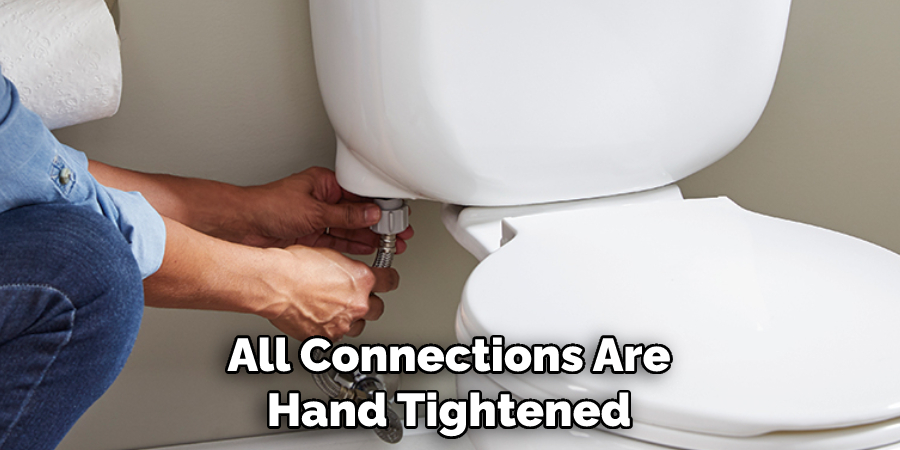
Step 4: Check for Leaks
Once the water is turned back on, check for any potential leaks from the new water supply line and make sure that it is functioning properly. After the line has been tested, use a pipe clamp to ensure that it is securely attached to the wall.
Step 5: Insulate the Line
To insulate the new water supply line and prevent future cold weather damage, wrap it with foam insulation or a rubber hose. After insulating the line, make sure to test it one last time for any leaks before using the toilet. If everything looks good, you have successfully replaced your toilet water supply line.
Tips for How to Replace a Toilet Water Supply Line
- Make sure you shut off the water supply to your toilet before starting any work on the water supply line. This should be done at the main shut-off valve or emergency shut-off, which can typically be found in the basement or garage.
- Wear protective gear such as gloves and safety glasses when handling tools and materials.
- Before beginning any work, have all the necessary supplies nearby, including a new water supply line, adjustable wrench, and plumbing tape.
- If you’re working with a metal water supply line, make sure to wrap any threads in Teflon tape to ensure they’re sealed properly.
- Ensure your new water supply line is the right size and length for the toilet you’re replacing.
- Do not overtighten any connections; just ensure they are secure and will not leak when used.
- Once all parts are connected, turn the water back on slowly to ensure there are no leaks or drips.
- If you are uncertain of any steps, contact a professional plumber to ensure the job is completed properly and safely.
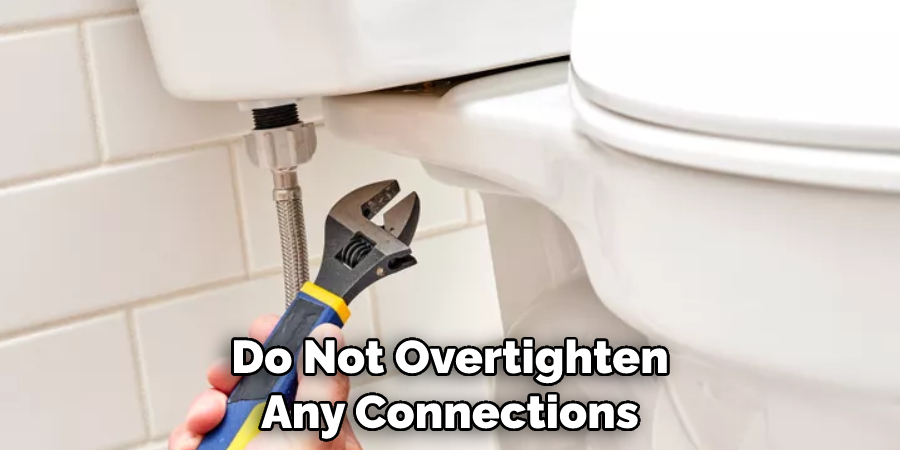
By following these tips and taking the necessary precautions, you can successfully replace your toilet water supply line.
Are There Any Special Considerations That You Should Keep in Mind When Replacing a Toilet’s Water Supply Line?
Yes, there are a few things to keep in mind when replacing a toilet’s water supply line. Make sure to turn off the water supply before beginning any repairs. When disconnecting the old line, take care not to damage the shut-off valve if it is brass or copper, as it could cause leaks and other plumbing problems. If the old line is corroded, make sure to replace it with one of the same size and material.
After installing the new line, turn on the water supply, check for leaks, and flush the toilet to ensure everything works correctly. Finally, consider replacing your galvanized steel water lines with newer, non-corrosive models if you have an older home or a tank-type toilet. This will help extend the life of your toilet and keep it running properly for years to come.
Are There Any Other Common Problems That Can Occur When Replacing a Toilet’s Water Supply Line?
Yes, other common problems that can occur when replacing a toilet’s water supply line include the following:
- Poorly-fitted Connections: The most important part of replacing the water supply line is to make sure all the connections are secure and leak-free. If the connection isn’t fitted tightly enough, it can leak and cause costly water damage.
- Damage to the Porcelain Toilet Bowl or Tank: If you’re not careful when replacing the water supply line, you could damage the porcelain components of your toilet, which could require costly repairs or even replacement.
- Corrosion and Rusting of the Pipes: Improperly installed water supply lines could lead to corrosion and rusting, which can cause damage to your toilet over time.
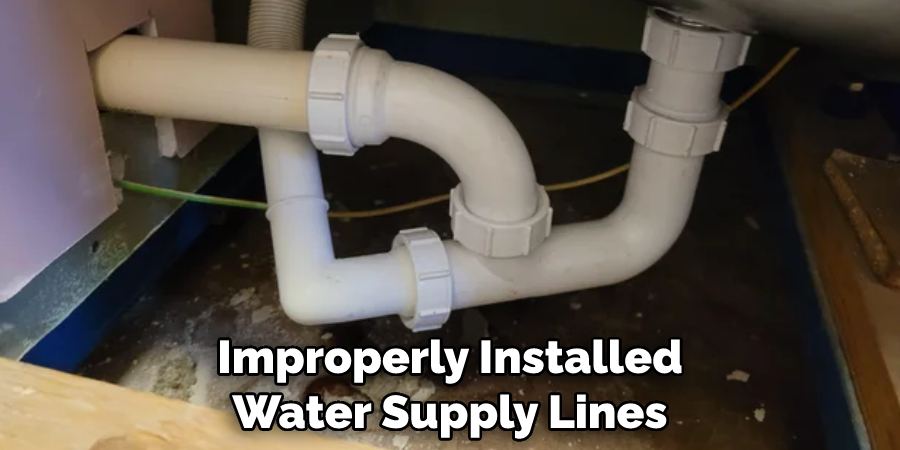
Finally, double-check all the connections after replacing the water supply line to ensure they are secure and leak-free. If you are still unsure about how to replace a toilet’s water supply line, it’s best to hire a professional plumber.
Are There Any Potential Risks Associated With Replacing a Toilet’s Water Supply Line?
Yes, there are potential risks associated with replacing a toilet’s water supply line. The most common risk is the possibility of water damage if the seal isn’t tight enough on the new line. This could result in flooding or other damage to your home and belongings. Additionally, if you don’t properly remove the old line and replace it correctly, the new line may not fit properly, resulting in a faulty connection.
It’s important to ensure that you follow all safety guidelines when replacing your toilet supply line and know where to turn off your water main in case of an emergency. Additionally, you should never attempt to replace a toilet’s water supply line if you don’t feel comfortable or qualified—always call a professional plumber to do the job.
Finally, you should never use a makeshift or temporary supply line—these could cause further issues down the road. Make sure that replacing your toilet’s water supply line is done with a permanent and certified hardware store-purchased replacement part according to local regulations and codes. This is the best way to ensure your home and belongings are protected from water damage.
How Can You Check for Leaks in the New Water Supply Line After Installation?
Once you have finished the installation of the new water supply line, it is important to check for leaks. To do this, turn on the shutoff valve and flush the toilet several times. Watch for any signs of water leaking from the connection between the new supply line and the toilet tank or from anywhere along its length. Turn off the shutoff valve and tighten the connection if there are any leaks.
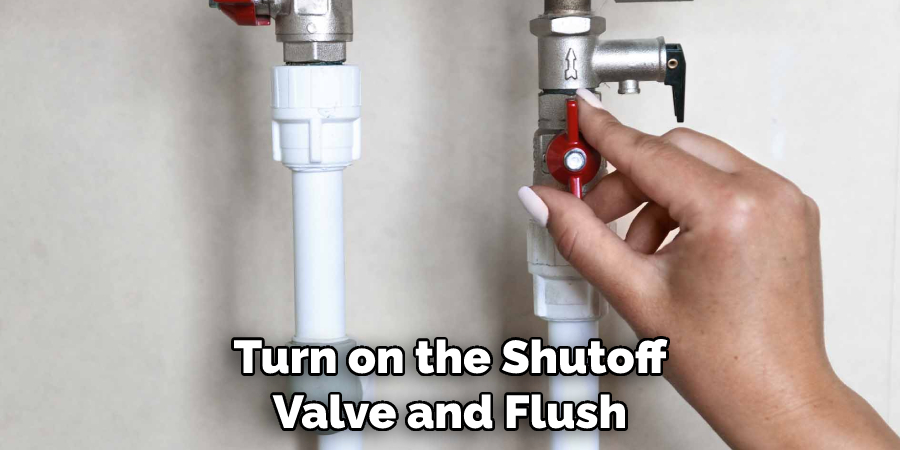
If that does not work, you may need to replace the supply line altogether. If there are no signs of water leakage after flushing, inspecting the new supply line more closely is important. Check for any weak connections or faulty fittings.
Also, ensure that the rubber seal located at the back of the toilet is in place and sealed properly. If any part of the new water supply line appears to be faulty, it should be replaced immediately.
Conclusion
The biggest disadvantage when it comes to replacing a toilet water supply line is the cost. Depending on the type of material used and its quality, you may need to purchase everything from a new shut-off valve to the entire length of flexible tubing. This can add up quickly in cost over time, so it is best to consider this before committing to the job.
In conclusion, replacing a toilet water supply line is a simple DIY project that can be completed in just a few steps. To start, you’ll need to turn off the shutoff valve, disconnect the old supply line, and measure for a new one. Next, attach the new line to both faucet valves and tighten it with pliers or an adjustable wrench.
I hope this article has been beneficial in learning how to replace a toilet water supply line. Make Sure the precautionary measures are followed chronologically.

